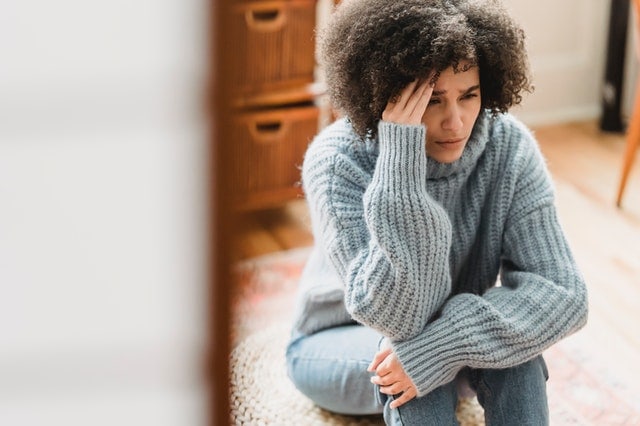How Are Migraine and Anxiety Connected?
Migraine and anxiety are closely linked, often occurring together. Anxiety can affect individuals with migraine, creating a cycle of stress and pain that impacts their daily life. For some, anxiety may even contribute to the onset or worsening of migraine, creating additional challenges in managing their condition.
Anxiety disorders such as generalized anxiety disorder (GAD), panic disorder, and social phobia are more common in individuals with migraine than in the general population. This is especially true for those with chronic migraine, where anxiety levels tend to increase as the frequency and intensity of migraine grow.

Why Does Anxiety Occur Alongside Migraine?
Anxiety related to migraine often stems from the uncertainty surrounding migraine attacks. Common worries include:
- Anticipation of Pain: Fear of when the next migraine will strike can create a constant state of anxiety.
- Impact on Plans: Concerns about missing important events, work, or social activities due to a migraine attack.
- Life Decisions: Anxiety can also be triggered by concerns about larger life decisions, such as career opportunities or family planning, that may be affected by migraine.
- Daily Functioning: The worry about how migraine affect relationships, finances, and overall life management can exacerbate anxiety.
These worries are logical, given the unpredictable and often debilitating nature of migraine. However, persistent anxiety can take a toll on both the mind and body, leading to a cycle of heightened stress and worsening migraine symptoms.
Causes of High-Pressure Headache
Several factors can lead to high-pressure headache, including:
- Demographics: More common in women than men and in individuals who are overweight.
- Medications: Certain medications, such as tetracycline antibiotics (e.g., doxycycline or minocycline), can cause high-pressure headache. Overuse of vitamin A supplements can also contribute.
- Underlying Conditions: Some medical conditions, like Cushing’s disease, kidney failure, and syndromes associated with high cortisol or aldosterone levels, can increase the risk.
Can Anxiety Make Migraine Worse?
Yes, anxiety can make life with migraine more difficult by increasing the overall disability and reducing quality of life. Anxiety may cause individuals to avoid making plans or commitments, out of fear of a migraine attack interfering with those plans. This avoidance behavior can lead to increased social isolation and stress, further intensifying both migraine and anxiety symptoms.
While anxiety is common among people with migraine, treating the underlying anxiety can have positive effects on managing migraine symptoms. Studies have shown that reducing the frequency of migraine through effective treatment often leads to improvements in anxiety and overall well-being.
How to Identify Anxiety Symptoms Related to Migraine
Individuals with migraine may experience anxiety symptoms without always recognizing them. Some common signs of anxiety include:
- Persistent Worry: Constant thoughts about future events or concerns, especially regarding migraine triggers and their impact on life.
- Physical Restlessness: Difficulty sitting still, jitteriness, or feeling “on edge.”
- Difficulty Sleeping: Insomnia due to racing thoughts or worries about the next migraine attack.
- Irritability: Feeling short-tempered, agitated, or easily frustrated.
- Changes in Appetite: Either a lack of appetite or overeating as a way to cope with stress.
These symptoms may not always be easy to spot in oneself, and others may point them out before the individual notices them.
Steps to Manage Anxiety Related to Migraine
Managing anxiety alongside migraine requires a combination of strategies. Here are some recommended steps:
- Consult a Healthcare Provider
Start by discussing anxiety symptoms with a healthcare provider, such as a primary care doctor or headache specialist. They may recommend behavioral therapies, and they can refer you to mental health professionals for further treatment.
- Address Lifestyle Factors
Improving certain lifestyle habits can help reduce both anxiety and migraine symptoms:
- Sleep: Ensure quality sleep by practicing relaxation techniques, such as deep breathing or guided imagery, to calm racing thoughts before bed.
- Exercise: Regular movement can help reduce stress and anxiety. Even light physical activity can have a positive impact.
- Nutrition and Hydration: Maintain a balanced diet, stay hydrated, and avoid stimulants like caffeine and energy drinks that may increase anxiety.
- Consider Behavioral Therapies
Several behavioral therapies have been shown to be effective in managing anxiety:
- Cognitive Behavioral Therapy (CBT): CBT helps individuals identify negative thought patterns and replace them with more balanced, realistic thoughts. It is highly effective for managing both anxiety and migraine.
- Biofeedback: This therapy involves monitoring physiological responses (such as heart rate and muscle tension) and using relaxation techniques to control them.
- Mindfulness-Based Stress Reduction (MBSR): Mindfulness and meditation practices can help individuals manage stress, improve emotional regulation, and even reduce migraine frequency.
- Meditation and Relaxation Techniques
Meditation and mindfulness practices can calm the nervous system, reducing anxiety and stress. By practicing regularly, individuals can develop the ability to manage anxiety more effectively, both during and outside of migraine episodes.
When To Talk With a Healthcare Provider
If anxiety is significantly affecting your daily life, it’s important to seek help from a healthcare provider.
Mental health professionals, such as psychologists or social workers, can provide therapy and support to help you manage anxiety.
You can also explore therapy options through online platforms, books, or apps that focus on CBT, mindfulness, and relaxation techniques.
Anxiety and migraine are often intertwined, creating additional challenges for those living with chronic pain. However, with the right strategies, anxiety can be effectively managed, improving overall quality of life and even reducing the impact of migraine. Whether through lifestyle changes, behavioral therapy, or mindfulness practices, there are many ways to regain control and find relief from both anxiety and migraine symptoms.
This resource is based of the HeadWise episode: Find Your Balance: Migraine & Anxiety Insights with Dawn Buse, PhD
Published April, 2024
Learn More
Subscribe for News and Updates
Stay informed with the latest news, updates, and episodes from the HeadWise podcast.

